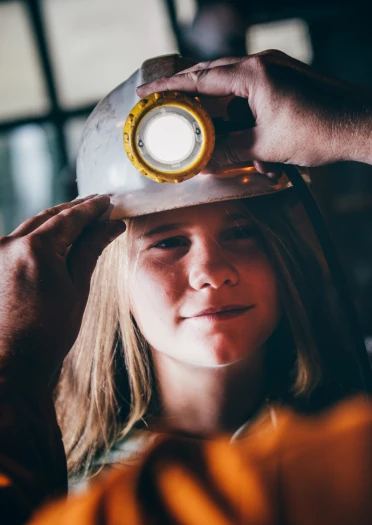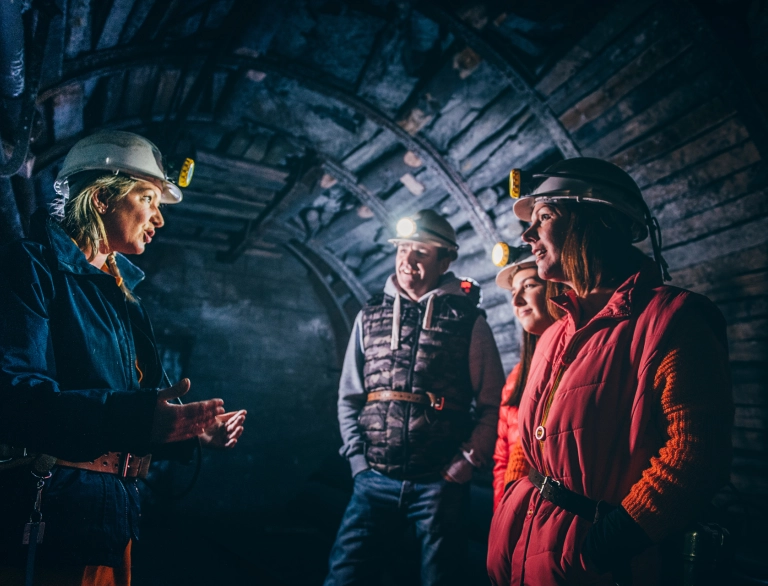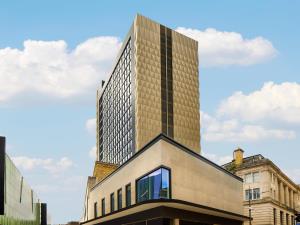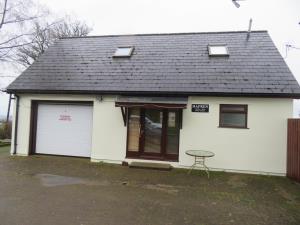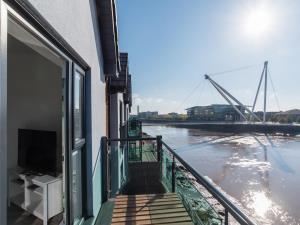With so much choice you may be wondering where to start. Scroll through our list for inspiration, or go straight to the section that interests you most; whether it’s things to see and do in the city centre, spending a day out at Tredegar House, wildlife spotting at the RSPB Wetlands Reserve, cycling in Geraint Thomas National Velodrome of Wales, visiting a Roman fortress, learning about the 18th century canal, finding local places to eat and places to stay, or finding options for exploring the wider area of South Wales, you'll find information on it all below.
Newport city centre
citycentreYou can walk from one end of Casnewydd’s compact city centre to the other in little more than 10 minutes - or a lot longer if you stop at the cathedral, museum and art gallery, and traditional covered market, which has been beautifully restored. The market is now home to independent traders, a bustling food court, creative workspaces and regular live events.

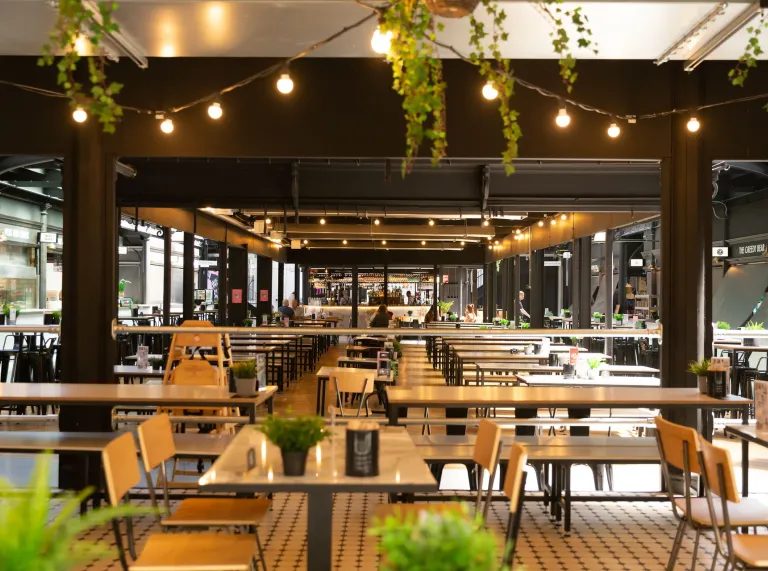
There’s also lots of interesting public art, including a statue that commemorates Casnewydd’s ‘Supertramp’ poet, WH Davies, the man who wrote the immortal lines, ‘What is this life if, full of care, we have no time to stand and stare.’
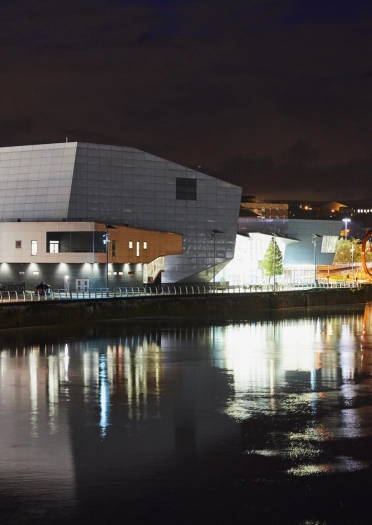
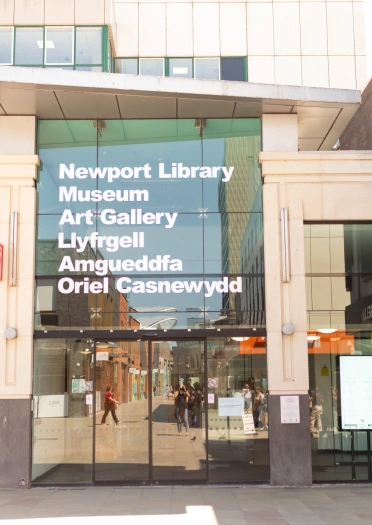

WH DaviesWhat is this life if, full of care, we have no time to stand and stare."
Newport Medieval Ship was discovered during the construction of the Riverfront Theatre. People can now visit the project, which after 16 years of conservation is almost complete.
For entertainment, there's the 2,000-capacity music venue. The Riverfront’s 500-seat theatre presents a mix of comedy, opera, dance, music and drama, with a pleasant café-bar with outdoor terrace that spills onto the banks of the River Usk.
Casnewydd is strongly associated with Chartism, the 19th century working class movement for political reform, and more recently has left a couple of marks (or at least, vivid stains) on popular culture: the absurdist rap collective Goldie Lookin’ Chain sprang from Newport’s anarchic subculture, while Kurt Cobain apparently proposed to Courtney Love in the legendary TJ’s rock venue.
Tredegar House
tredegarhouseSet in a beautiful 90-acre park, Tredegar House is probably the best 17th century Charles II mansion in Britain, and a thoroughly pleasant place to spend a day, exploring the red-brick house, its gardens and parkland.
Now run by the National Trust, the house was built by the powerful Morgan family. They were the local landowners and later Lords of Tredegar – although their most famous son is Sir Henry Morgan (1635-1688), the original pirate of the Caribbean, after whom Captain Morgan Rum is named. Another famous son, Godfrey, was an army hero who survived the Charge of the Light Brigade during the Crimean War. Even more remarkably, so did his horse Sir Briggs, who lived to the ripe old age of 28 and is now buried in the Cedar Garden.
The house’s interiors reflect its progress from flamboyant 17th century origins, through stately Victorian days, to the 1930s when it hosted notoriously wild parties.
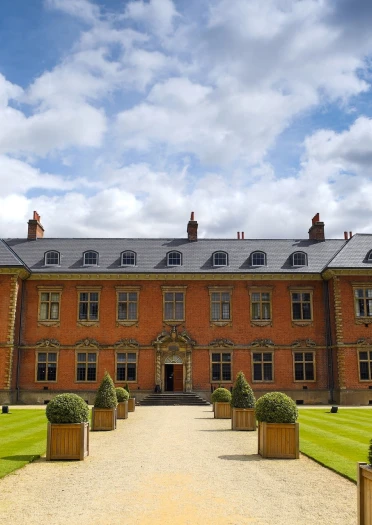
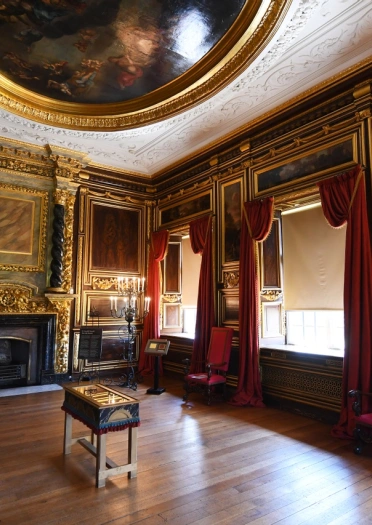
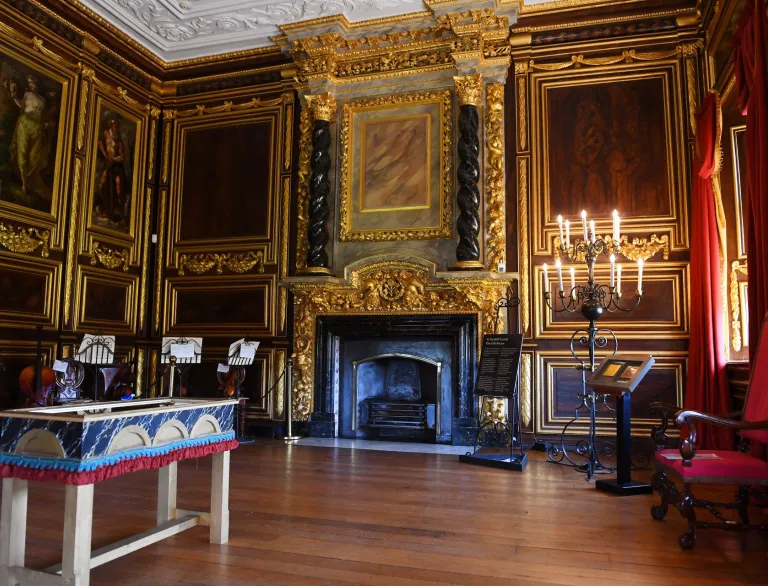
Newport Transporter Bridge
In 1906 the Morgan family built the nearby Transporter Bridge, one of just eight that survive in the world. It’s designed to carry cargo across the River Usk on a gondola, which is slung under a rail that’s tall enough to allow ships to sail underneath. The site is undergoing development, including restoration of the bridge and the construction of a visitor centre. As the bridge is still undergoing major refurbishment, it remains closed to the general public but the bridge and visitor centre will be open fully once all the works are complete.
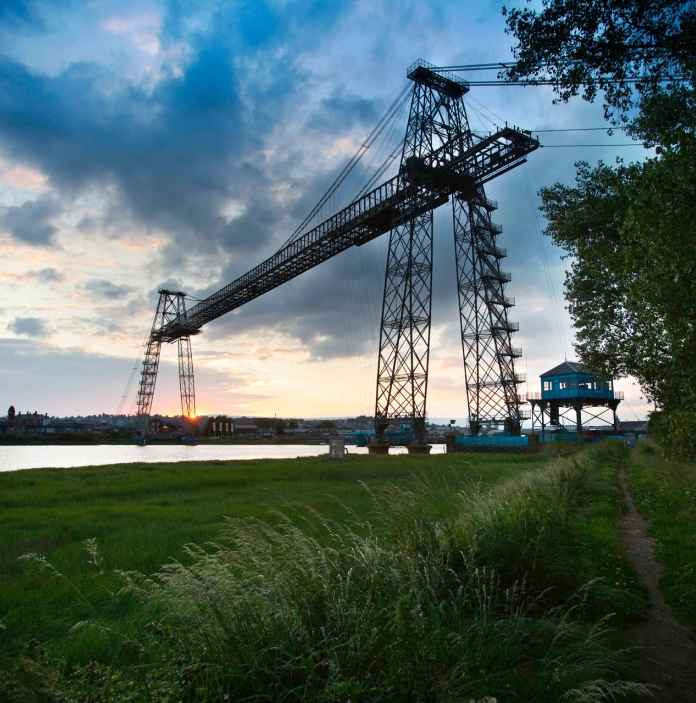
RSPB Newport Wetlands Reserve
wetlandsThe 100 km2 of wetland along the Severn Estuary, known as the Gwent Levels, have gradually been reclaimed from the sea by people over thousands of years. The birds have benefited too, and this is now one of the most important places for wildlife in Wales.
At its heart, the Newport Wetlands Reserve was created to compensate for the loss of the mudflats when the Bae Caerdydd (Cardiff Bay) barrage was built in the 1990s. Its 438 hectares of reed beds, lagoons, wet grassland and scrub have attracted a wealth of wetland birds. It’s also an excellent place to see orchids, butterflies, dragonflies and otters.
The exact species you’ll see depends on the time of year, and might include bearded tits, avocets, bitterns, zillions of wildfowl, marsh harriers and peregrines.
Read more: Discover the history and wildlife of the Gwent Levels, Casnewydd (Newport)
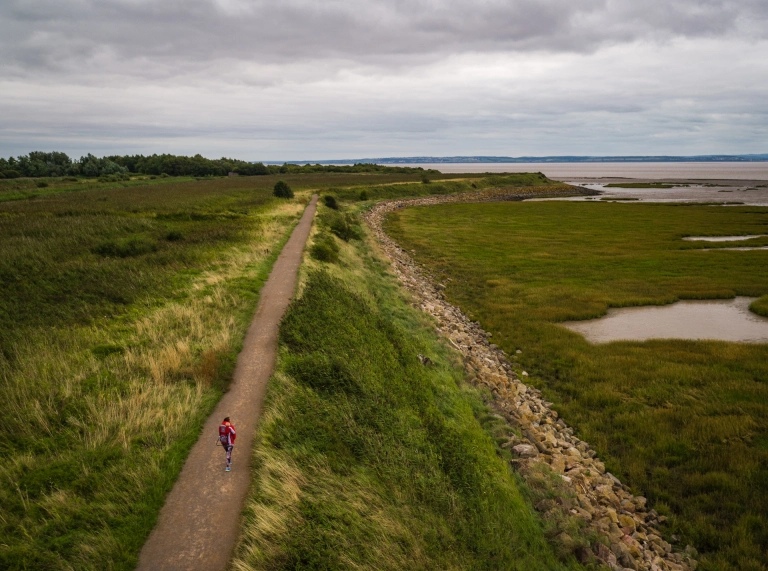
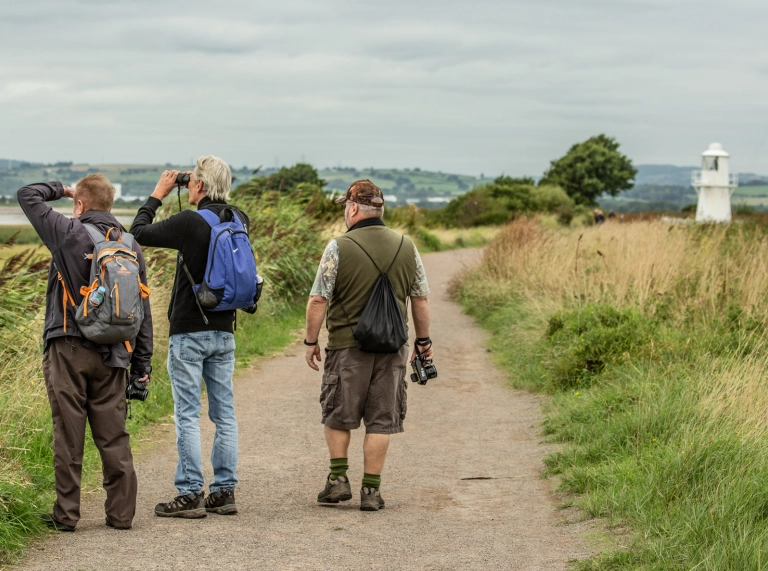
Geraint Thomas National Velodrome of Wales
GeraintFor a taste of world‑class sporting action, head to the Geraint Thomas National Velodrome of Wales at Newport International Sports Village. It's one of only a handful of indoor velodromes in Britain. Visitors can experience track cycling on the same circuit where Olympic and Paralympic champions have trained. With its sweeping 250‑metre track, fitness facilities and regular events, the venue offers a thrilling way to experience Casnewydd’s modern sporting spirit.


National Roman Legion Museum
romansWales was one of the farthest-flung outposts of the Roman Empire, and in AD75 the Romans built a fortress at Caerllion (Caerleon), a few miles from Casnewydd, that would guard the region for over 200 years.
This was one of only three permanent fortresses in Roman Britain, the home of the 2nd Augustan Legion, housing 5,000 soldiers and horsemen. It had an amphitheatre, baths, shops and temples. The National Roman Legion Museum lies inside what remains of the fortress, whose ruins include the most complete amphitheatre in Britain and the only remains of a Roman Legionary barracks on view anywhere in Europe. The museum also holds half a million objects from the nearby Roman forts of Caerllion (Isca) and Brynbuga (Usk, Burrium).
While you’re there, the little town of Caerllion itself is worth a wander – it’s a pretty place, with lots of good pubs, restaurants and tea rooms, notably in the Ffwrwm Arts and Crafts Centre.
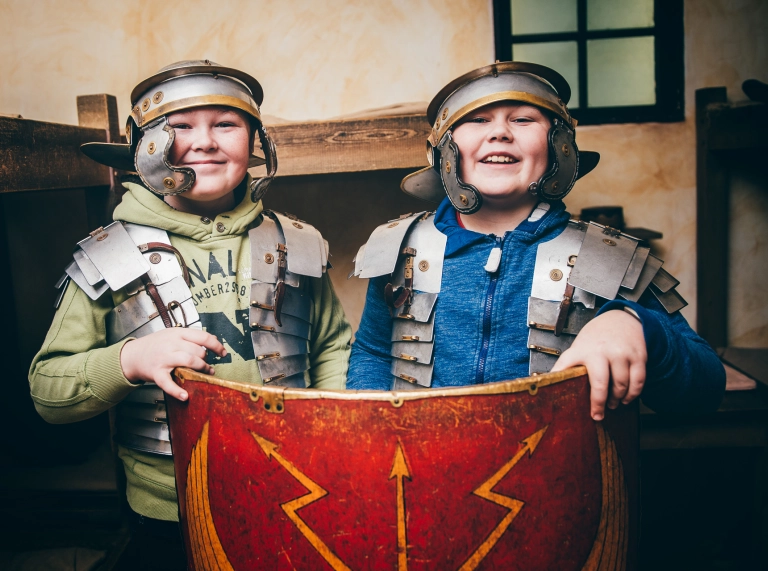
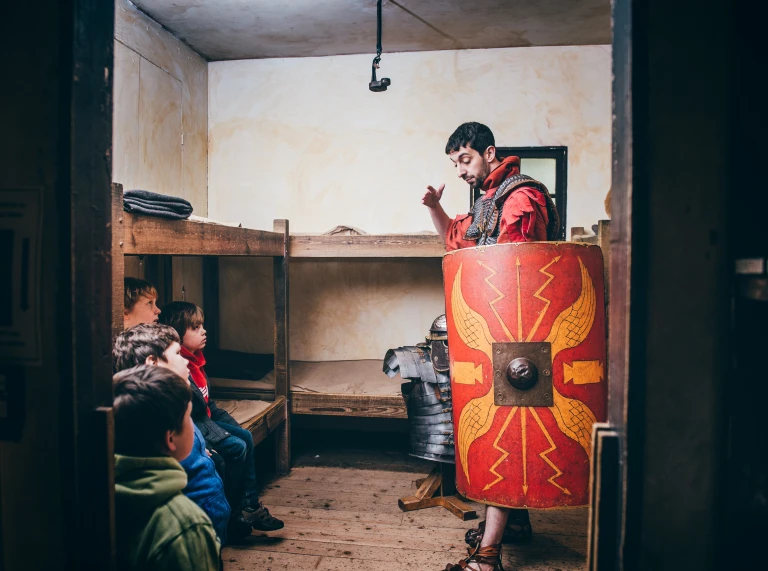
Fourteen Locks Canal and Heritage Centre
fourteenlocksThe problem facing 18th century industrialists was how to transport all that coal, iron, limestone and brick down from the South Wales Valleys to Casnewydd’s docks. The Monmouthshire Canal was the solution, but the hills around Casnewydd still posed a major obstacle to the canal’s 11-mile Crymlyn (Crumlin) branch.
Completed in 1799, the Fourteen Locks Canal and Heritage Centre is an ingenious flight of 14 locks and is one of the world’s finest examples of the canal engineer’s art. Raising the water level by 50 m, it is supported by a series of ponds, sluices and weirs to control the water supply. Today, it’s simply a lovely place to go for walks along the canal towpath, to enjoy the wildlife and surrounding countryside, which includes the Allt-yr-Yn Nature Reserve.
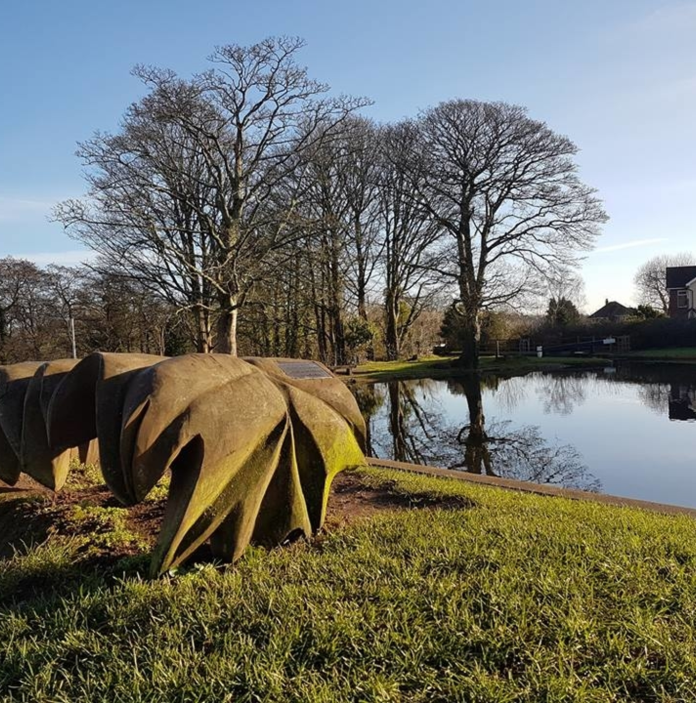
Places to eat in Newport
EatIn Casnewydd, good food comes with a generous helping of character. The beautifully restored Victorian market hums with street‑food kitchens and artisan stalls, award-winning Gem 42 plates up creative fine dining, and Tiny Rebel Brewery Bar pairs craft beer with hearty food. Whatever your appetite, you’ll find something worth lingering over.
Read more: Places to eat in Casnewydd (Newport)
Places to stay in Newport
accommodationWith so many things to do and see, Casnewydd makes for a great short break destination. You'll find a range of accommodation options, based in the city itself and close by. Among the options, you could choose a seriously stylish stay at the five-star Celtic Manor Resort, an affordable self-catering stay in Newport Student Village, or to take in the city views from the tallest building in the city at Mercure Newport, built in 1966 and renovated into a vibrant hotel.
Read more: Places to stay in Newport
Accommodation options in Newport
And further afield…
transportlinksCasnewydd has the best transport links of anywhere in Wales, which is half the reason it attracts global events like the Ryder Cup and NATO summit (the other half is the sheer excellence of the Celtic Manor Resort).
It’s easy to get to and, when you’re here, easy to nip off on day-trips.
Caerdydd (Cardiff) is 20 minutes away by train or car, with all the attractions of a European capital city. Thirty minutes north and you’re deep into Monmouthshire, home to many of our best restaurants, classic market towns like Trefynwy (Monmouth), Brynbuga (Usk) and Y Fenni (Abergavenny), There are some superb castles like Rhaglan (Raglan), Cil-y-coed (Caldicot) and Cas-gwent (Chepstow), which guards the entrance to the beautiful Wye Valley.
And since Casnewydd's fortunes were based on exporting coal and iron, you’d better visit the places where these were mined and made – notably at Blaenafon (Blaenavon) Ironworks and the Big Pit National Coal Museum.
